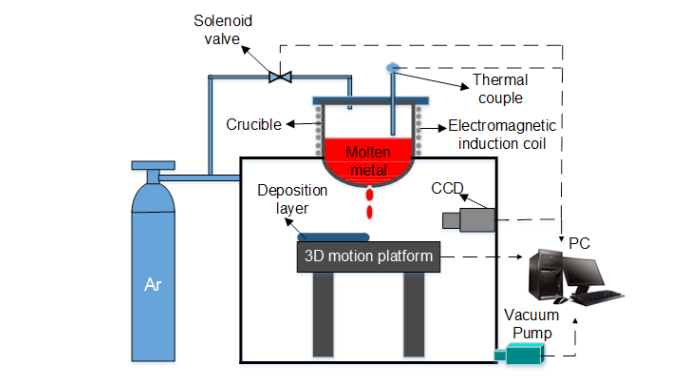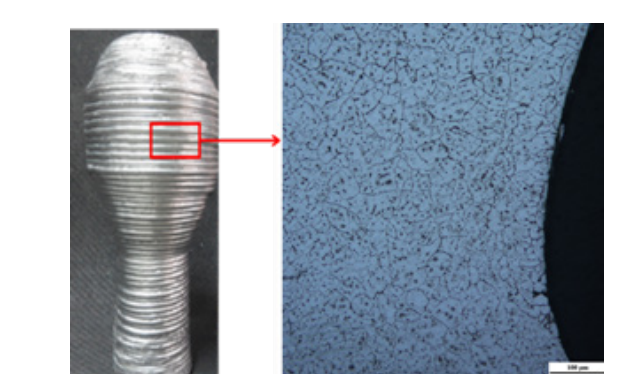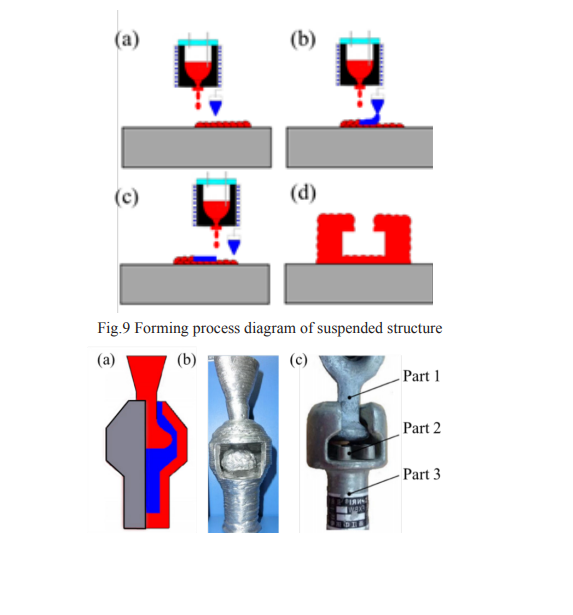In ‘The Additive Manufacturing Process of Electric Power Fittings Fabricated by Metal Droplet Deposition,’ authors Zhengying Wei, HaiHua Wu, and Guangxi Zhao explore more about AM techniques that could prove to be better, faster, and more affordable for manufacturing electric power fittings.
This research focuses on making components with electromagnetic induction, in comparison to more traditional techniques of both casting and forging. Hoping to eliminate more cost-prohibitive methods, the Chinese authors explore ways to manufacture the fittings on-site, using metal droplet deposition. Previous efforts and studies have produced components with inferior properties like surface quality.
Droplet deposition consists of the following:
- Pneumatic system – producing droplets on demand, comprised of a controller, solenoid valve, crucible, heating furnace, and nitrogen gas resource.
- Motion control system – forms workpieces by controlling the 3D platform according to data, made up of the program multiple axes controller, 3D movement platform, and deposition substrate.
- Forming process monitoring system – observes deposition process, made up of CCD camera, and image acquisition card.
- Inert environment control system – prevents metal from oxidizing and is made up of the glove box and the gas circulating device.
Molten aluminum droplets were printed on a horizontal Al alloy substrate, leaving the researchers to analyze droplet parameters like size, displacement, and temperature.
“The results indicated that the internal structure is dense, and the mechanical properties were good,” stated the researchers.
During the experiment, a thin-walled workpiece was redesigned, along with a ball head ring workpiece that was created. Supporting materials were added to prevent collapse, with a variety of materials such as gypsum powder, sand, ceramic, and resin combined to test the support properties.
Microstructure analysis indicated that droplet diameter was maintained at 100 μm for the most stable droplets. Ultimately, the scientist’s experiments were able to prove that the electric power fittings they created would satisfy all requirements for users engaging in this type of process. Substrate temperature, moving speed, and the deposition process were all evaluated during the experiment, and they comprehensively assessed the fitting workpieces and the structural stability and composition of the support materials that were required.
“Dimensional accuracy and microstructure analysis of the workpieces were carried out. No obvious overlap trace (such as overlap line and cracks) was observed, and the internal microstructure is equiaxial crystal. Density is measured by drainage method. The average density of droplet deposition components is 99.51%, which is much higher than the cast raw material,” concluded the researchers.
Metal 3D printing is being explored in so many different ways today as scientists explore methods like electron beam welding, droplet control, how droplets interact, and more. What do you think of this news? Let us know your thoughts! Join the discussion of this and other 3D printing topics at 3DPrintBoard.com.
[Source / Images: ‘The Additive Manufacturing Process of Electric Power Fittings Fabricated by Metal Droplet Deposition’]
Subscribe to Our Email Newsletter
Stay up-to-date on all the latest news from the 3D printing industry and receive information and offers from third party vendors.
You May Also Like
Gorilla Sports GE’s First 3D Printed Titanium Cast
How do you help a gorilla with a broken arm? Sounds like the start of a bad joke a zookeeper might tell, but it’s an actual dilemma recently faced by...
Nylon 3D Printed Parts Made More Functional with Coatings & Colors
Parts 3D printed from polyamide (PA, Nylon) 12 using powder bed fusion (PBF) are a mainstay in the additive manufacturing (AM) industry. While post-finishing processes have improved the porosity of...
$25M to Back Sintavia’s Largest Expansion of Metal 3D Printing Capacity Since 2019
Sintavia, the digital manufacturing company specializing in mission-critical parts for strategic sectors, announced a $25 million investment to increase its production capacity, the largest expansion to its operations since 2019....
Velo3D Initiates Public Offering in a Bid to Strengthen Financial Foundations and Drive Future Growth
Velo3D (NYSE: VLD) has been among a number of publicly traded 3D printing firms that have attempted to weather the current macroeconomic climate. After posting a challenging financial report for 2023,...



































